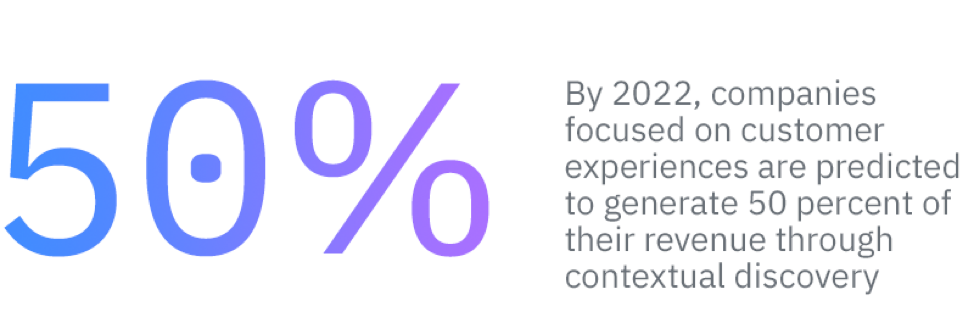![How to Create a Digital Marketing Budget [With Template]](https://img.shgstatic.com/clutch-static-prod/image/resize/715x400/s3fs-public/article/cbefcf801b6c486982d781482f9a654f.png)
![How to Create a Digital Marketing Budget [With Template]](https://img.shgstatic.com/clutch-static-prod/image/resize/715x400/s3fs-public/article/cbefcf801b6c486982d781482f9a654f.png)
Updated December 10, 2024
In this day and age, more and more marketers are taking a look at how they interact with their customers and how their tactics best attract them. With the benefits of customer engagement, there comes its own set of challenges.
According to the latest Salesforce State of Marketing Report, 52% of marketers adapt their strategies and tactics based on customer interactions.
It’s no wonder, as a modern customer is always on, switching channels to make purchasing decisions faster and more conveniently.
Looking for a Digital Marketing agency?
Compare our list of top Digital Marketing companies near you
Here, real-time engagement is definitely a thing, but it’s also a top challenge. Only 28% of marketers can say they’ve succeeded in engaging customers across channels at scale, according to the state of marketing report.
These stats are quite motivating. If you don’t provide the relevant environment for such multichannel interactions, ruthless customers will switch to those competitors who have done a better job.
In the next couple of years, customer experiences will be the primary source of revenue.

Nearly half of revenue will come from focusing on the customer experience.
Let’s view what common tactics marketers can leverage to engage and retain customers across different channels, as well as major challenges that go hand in hand with successful real-time engagement.
By taking a look at your users’ actions, companies can promote their brand by generating viral media coverage through a contest, newsjacking, or a slick reply to negative feedback.
Social media channels are the most fruitful place to exercise this tactic.
To showcase what users can actually do with its software, Adobe ran a social media campaign for artists and designers who were supposed to create an artwork using any Adobe products and share them under the brand’s hashtag.

Adobe then used these works for feature promotions and user recommendations within the software. A lot of the posts were shared on Instagram.
This is a tactic where companies preconfigure messages to those customers who are already engaged, such as a welcome email after registering on your site, a pop-up offer after shopping cart abandonment, etc.
Bullets2Bandages, also branded as Groomsmen Central, is an apparel and accessories store.
The company reduced its cart abandonment by showing a pop-up with a discount for expedited shipping and adding a sense of urgency by displaying a countdown timer for the offer.
Engagement can sometimes be based on the context and previous interactions with a customer on one or more channels.
This usually comes in different forms of adapted content, like recommendations based on previous searches, tips based on the behavior on the site, location-based special offers, etc.
This tactic is the best option for delivering an interactive and personalized experience. Of course, with the help of the right tools and technologies, but I’ll come to that later.
ASOS, an online fashion and cosmetics retailer, reached high conversion rates and lower return rates by introducing dynamic “catwalk” videos where customers can see how a piece of clothing will look in motion.
The company hasn’t stopped there: this year they’ve incorporated AR into their iOS app.
Now customers can have a much more intimate experience with the virtual catwalk on their screens. They can zoom in and out to get a better look at the model’s wardrobe.
Through personalized techniques, companies can strive to bridge the offline and online divide and deliver the best response across every channel.
For example, this can be personalized online messages based on offline interactions through a purchase or loyalty card activation.
Paint giant Sherwin-Williams has boosted sales and cut customers’ in-store time by introducing the ColorSnap app. With its help, customers can upload a photo and use the app to paint the scene with the colors they fancy.
The road to successful customer engagement is obviously paved with challenges. Let’s review the major ones and how to smartly approach them.
We live in a culture of immediacy. A few seconds of waiting in vain is a good recipe for instant irritation.
One pushy and inappropriate notification is an efficient relationship breaker. For this reason, customers gravitate toward those brands that can provide a relevant experience.
Unfortunately, businesses are still struggling to keep up with the speed of their customers, particularly when dealing with multiple channels.
On average, only 32% of marketers claim that their channels are dynamically coordinated. The lack of coordination leads to a good deal of duplication when identical messages are broadcast across channels.
The overall trend over the last two years is unnerving: while more channels are getting coordinated, the number of siloed channels is growing as well.
To handle this, users can employ an AI-driven system to deliver dynamic messages based on the data captured across all the sources.
Customer actions will be processed in real-time to deliver the next best action for each interaction. Users can use email service providers, CMS, and automation tools like HubSpot to streamline this process.
Another idea is to try an omnichannel customer service by integrating all your marketing channels. This can be chats, calls, emails, or social media accounts, within one system.
It will allow you to not only be present on those channels but to provide consistent experiences across them. Salesforce, Zendesk, and Freshdesk are some of the tools your company could consider.
Personalization now goes well beyond a customer’s name or location. Customers need more unique experiences where all their actions across different touchpoints will have a distinct impact on a final interaction.
Consequently, to get more context for painting vivid customer profiles, companies need to integrate all the customer data sources within one system.
When it comes to data transformation and integration, we usually talk about a data governance model and a dedicated team of data scientists and engineers.
Most companies, however, find it difficult, or too expensive, to hire a whole new technical team to transform and manage data.
It’s way easier to use a cloud-based solution where it’s possible to connect various data sources, automate data flows, and manage cleansed data within one place.
Be careful, though, since the management of highly sophisticated systems usually requires a sufficient amount of training or consulting services from the product’s vendor or a specialized partner.
Oracle, Adobe, and Lotame are some of the tools that could help with this process.
You never know which channel your customer will choose to communicate with your company. To predict this and prepare instant relevant responses, there’s a strong need to intelligently orchestrate possible interactions across multiple touchpoints.
First of all, companies need to map their customer journeys, that is, to connect all the data dots together.
Then, think of all the possible ideal and not-so-ideal routes that potential and current customers may take between those destinations.
Second, to orchestrate customer interactions, companies need to automate customer journey mapping across all the channels.
Automation is essential: customer data should be constantly updated to let the system learn and serve next-best actions. It’s kind of an ongoing conversation where both parties are highly interested in what the other is to share.
The best instrument for this task is AI-driven MarTech suites that pump large amounts of data from different sources and present everything smartly visualized on dashboards.
Based on historical and real-time data, AI will help to predict customers’ next actions and engage them by personalizing offers and conversations.
Companies shouldn’t hop on multi-channel personalization if they have little experience with it. They should start low and try to personalize the most popular channel.
Then, companies should add a few more and analyze successes and failures. Optimize and repeat until they have enough resources to start mapping the comprehensive customer journey across all the touchpoints.
To power real-time personalization of customer experience, companies need to follow this three-part recipe:
Compiling that many tasks in real-time and perfectly is beyond human reach.
Luckily, there are so many solutions to choose from.
Each year, Scott Brinker compiles a marketing technology landscape, in 2018 consisting of 6,829 marketing technology solutions:
In such a bewildering situation, it’s better to go for a hub where you can centralize the data from your existing tools and get insights on trends.
Under each task we’ve reviewed, I’ve given a few examples used by many businesses all over the world.
Each tool won't be the best fit for everyone, but these tools can be a good start in the journey to understanding your technological needs when it comes to customer engagement.
![How to Create a Digital Marketing Budget [With Template]](https://img.shgstatic.com/clutch-static-prod/image/resize/715x400/s3fs-public/article/cbefcf801b6c486982d781482f9a654f.png)

